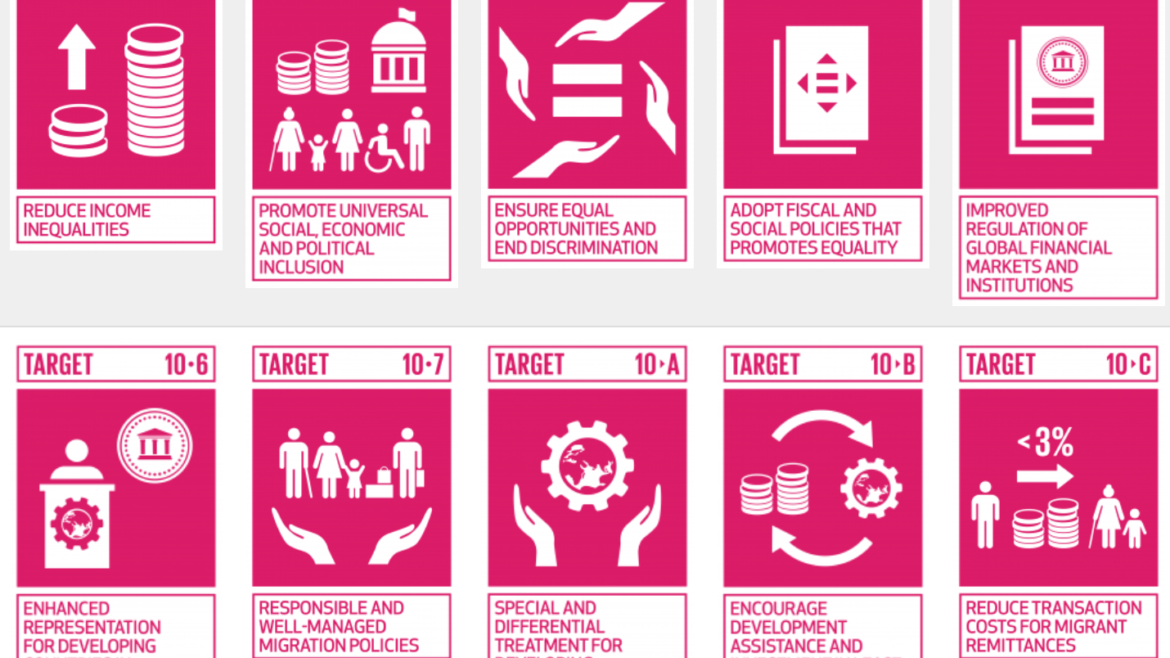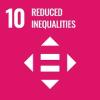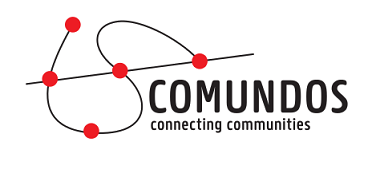SDG10: Reduced Inequalities Within and Among Countries
By the end of this lesson, the student will be able to:
1. Understand what SDG10 advocates for
2. Distinguish between inequalities within and among countries
3. Understand the difference between overt and covert racism
4. Analyze digital stories on SD10 on topics like inclusion and immigration.
5. Reflect on the concept of “diversity” in oneself and others by watching a video about diversity.
Brainstorm session based on the following suggested questions.
• Are we all the same?
• Are we all treated in the same way?
• Who are the most vulnerable groups to advocate through SDG10?
• Income disparities are inequalities to be reduced WITHIN countries 1 . Do you know another example?
• Disparities in representation and voice for developing countries in decision-making in global international economics is an existing inequality AMONG countries. Do you know another example?
• Are all forms of racism visible?
• Police brutality against people of color (POC) is one of the multiple socially acceptable and invisible manifestations of racism. Do you know other examples?
• What is the difference between a migrant and a refugee?
Possible adaptations: (Online) This activity can be done with the use of online tools such as Jamboard, Mentimeter, or Miro.
1 Note for teachers: more information on inequalities within countries can be found here.
SDG 10 addresses inequalities within and among countries. It calls for nations to reduce inequalities in income as well as those based on age, sex, disability, race, ethnicity, origin, religion, or economic or other status within a country.
 In fact, just 8 men own the same wealth as half of the world. The gap between rich and poor remains quite wide. However, according to the UN, before Covid-19 income inequality was falling in some countries. Unfortunately, the pandemic can lead to a reversion of such progress (as reported in the UN_Report2021 ).
In fact, just 8 men own the same wealth as half of the world. The gap between rich and poor remains quite wide. However, according to the UN, before Covid-19 income inequality was falling in some countries. Unfortunately, the pandemic can lead to a reversion of such progress (as reported in the UN_Report2021 ).
The most vulnerable groups (older people, immigrants, refugees, people with disabilities, children, LGBTQ+ community members, and women) face high inequalities. Moreover, often these groups intersect (ie a refugee woman with a disability) and inequalities strengthen.
To reduce inequalities, many changes must be made at policy levels.
Watch the digital stories and answer the subsequent questions. This activity can be done individually or in groups of 3-4 students.
What message does the author want to send?
What type of discrimination is the protagonist experiencing?
Are students of different religions treated equally in your school?
Which initiative in your school could raise awareness of racism?
2. Illegal_emigration
What message does the author want to send?
Where does the protagonist get imprisoned?
Do you know what is going on in Libya?
What factors define whether it is legal or illegal emigration?
How would you feel if, in order to have a better quality of life, you were forced to move to another country?
Does your country have a comprehensive set of migration policies?
Let students watch this video (in class or at home individually) ( We Are All Different - and THAT'S AWESOME! | Cole Blakeway ) and start a discussion with the students, following the suggested questions:
Are you different from others? How? Your personality? Your appearance? Your hobbies? Etc.
Do you regard your diversity as a positive or a negative feature? Why?
What are the benefits of a world full of diversity, where everyone accepts and equally respects one another?
What is the final message the young speaker wants to send in the video?
This quiz is about UN Goal 10: Reduced Inequalities Within and Among Countries. You can either use it at the end of your lesson to revise the topics you have already talked about, or in the beggining of the lesson to challenge students prior knowledge and gain their attention.
For the SDG 10 (reduced inequalities) sheet, our favorite pedagogical twist is: Reflection Assignment: at the end of a lesson cycle assign students to create a reflection piece about SDG10. Students can record their learning, generate final thoughts, ask questions, or think about how they would approach work differently in the future. It's valuable to hear what parts of a unit stood out and why, and what parts were less meaningful and why. This reflection assignment can be used as a reflection instrument and for peer assessment. In this case, students are divided into groups of about six students and each student reports their reflection assignment that will be assessed by their peers in the group, through feedback and a final score. Teachers should provide students with clarified goals and criteria for assessment. Scores are not the final scores for the teachers but help them in the final assessment process while students learn how to evaluate other fellow students. If you have another pedagogical twist in mind, feel free to apply or check the pedagogical twists list .
More information on SDG 10 by the United Nations .
More information on SDG 10 targets can be found here , and here .
Material linked to Activity 1.
Why It Matters (SDG10) UN gives an overview of the specific goal, explaining some examples of inequalities, ways to tackle discrimination, and actions we can take to solve inequality issues.
This video and this image can enable students to know more about overt and covert racism.
Article by Amnesty International (2021) on detention centers in Lybia: Libya: Horrific violations in detention highlight Europe's shameful role in forced returns
Additional inspiring material:
Understand Goal 10: Reduced Inequalities (video)
Wanda Sykes Takes Us Through the History of LGBTQ+ — Now You Know “Have you ever wondered about the beginnings of homosexuality? Get to know a little bit about the fight for equality as Wanda Sykes takes us on a journey all the way back to the Middle Ages”

A gift for Comundos
Over the years, Comundos has helped remote communities around the world by teaching critical thinking, media literacy and the use of communication technology.
To do this effectively, we need your support for computers, translations, courses and social media management.
Thank you .
BE11 1030 2973 8248




